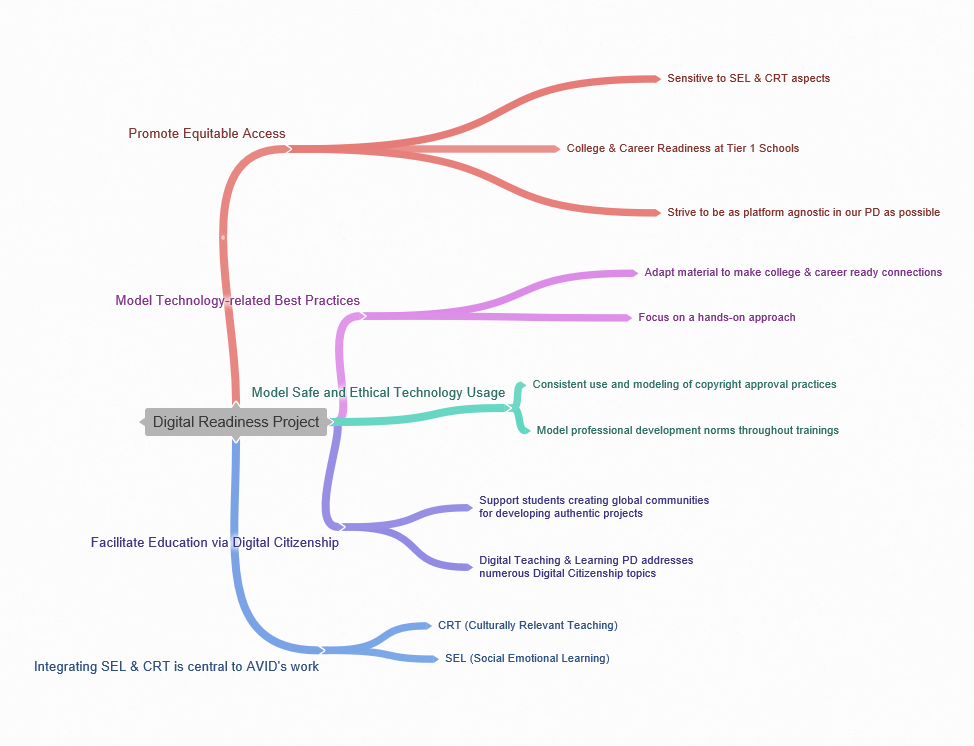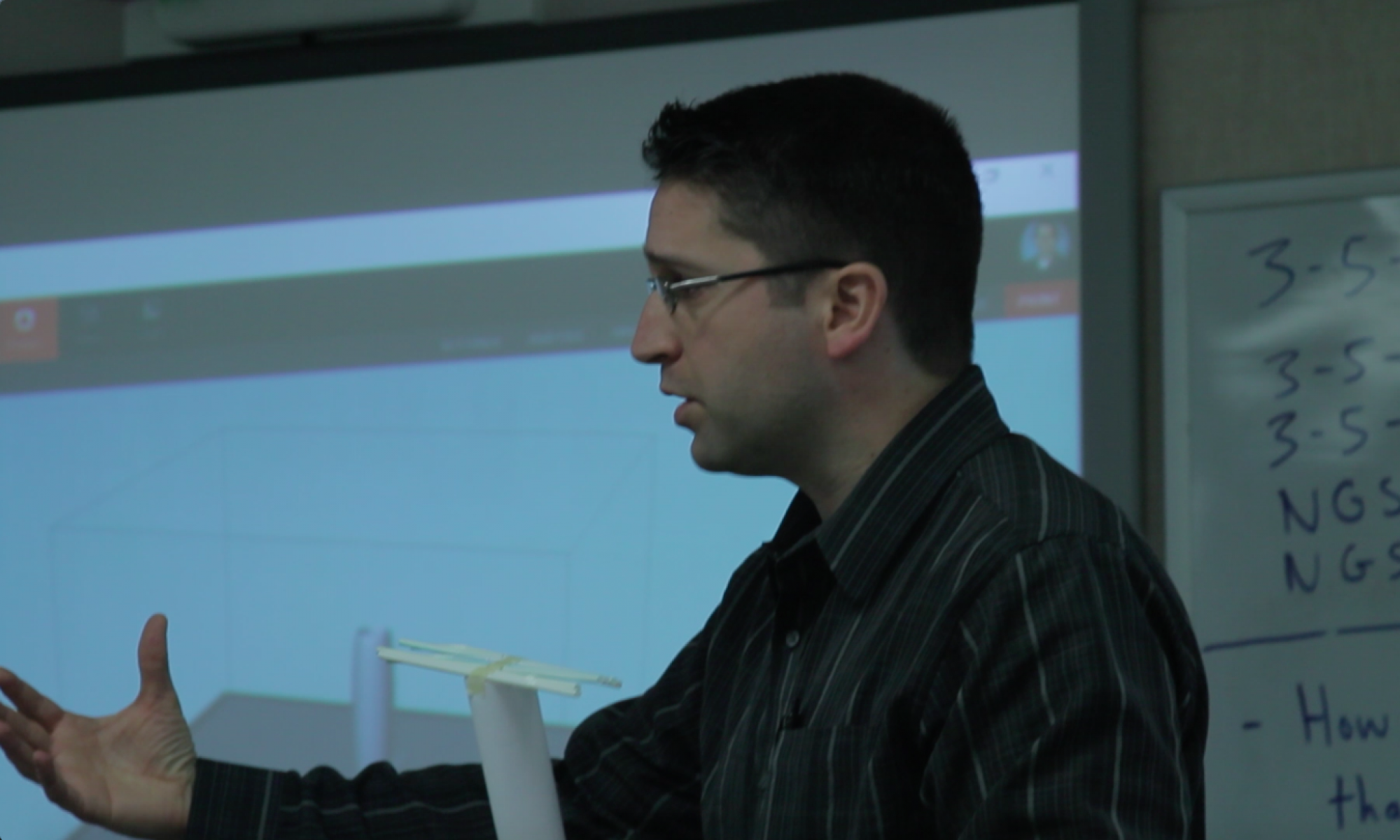
Preparing for this Project
As part of my work with the Seattle Pacific Digital Education Leadership program, students in the program worked with their organizations to evaluate key aspects of ISTE Coaching Standard 5. With a focus on digital citizenship, language from this standard guided development of key reflection questions regarding the work that each respective organization is doing around digital education. Essentially all of the questions could be reduced down to the following, how digitally ready are we as an educational institution? The following paragraphs describe some examples of topics that came out of that meta-cognitive discourse.
Promoting Equitable Access
The heart of our work is preparing students for college and career readiness at Title 1 schools. This permeates all that we do at AVID. With this in mind, we seek to provide teachers with professional development training that empowers them to support their students along the K-12 continuum and advancing toward college and career. An important aspect of this is providing platform agnostic approaches and training. This means that teachers can take back the pedagogical practices and applications to their classrooms. In this way, teachers can utilize and apply as much as possible from our trainings to their unique educational context.
Modeling Technology-related Best Practices
AVID professional development seeks to model best practices in relation to educational technology. The overall emphasis is on appropriate pedagogical and andragogical practices. This ties into our instructional mantra of “Learning First, Tools Second”. There are too many things to list that go into this effort, however, making college and career readiness connections is always front and center to our work. As educators, we want students to be ready for yet-to-be imagined technologies and jobs. At AVID, this means developing professional development that empowers teachers to scaffold critical thinking processes for students, engage with hands-on learning that’s also minds-on, make abstract ideas as concrete as possible, and develop an overall sense of empathy for their students’ journey.
Modeling Safe and Ethical Technology Usage
Modeling safe and ethical usage of technology begins in AVID professional development with the consistent adoption and implementation of norms. This common understanding of what creates a safe place for the adult learners present helps to model and form the foundation for what this looks like online and back in the classroom. Some examples of norms include monitoring digital device usage (mindfulness), asking questions, and engaging with an open mind. Basic technology applications include safe searching online, modeling copyright adherence and appropriate citations, and balance required for effective blended learning. All of these things provide a solid foundation for developing responsible digital citizens.
Facilitating Education via Digital Citizenship
Developing digital citizenship builds on the foundations laid through safe and ethical usage of technology. Preparing digital citizens means bringing together all of the necessary digital skills for students to learn, grow, and apply as they become responsible online citizens and display good citizenship in general. As digital platforms continue to grow as a medium for civil engagement and everyday life, students need to be taught the skills necessary to navigate this. In many cases, this content is also new to teachers so teachers need support through careful modeling and effective professional development. A lot is involved with this but professional learning networks can help as teachers seek to learn and apply ways to support students as they become digitally literate, digitally mindful, and authentic contributors engaged with a global audience.
Integrating SEL & CRT is central to AVID’s work
At the end of the day, online human interaction is still human interaction and so it all comes back to relationships. By integrating effective social emotional learning opportunities across our professional development, AVID is able to provide culturally relevant teaching strategies in an empathetic way that is contextually relevant. This helps educators to be mindful of instructional nuances that may exist across face-to-face and digital interactions while providing balanced instruction that is pedagogically appropriate. In this way, teachers can meet students where they are at as we seek to educate the whole child and prepare them for what that means in both face-to-face and increasingly virtual environments.
Next Steps
Discussing these general areas among other ideas led to a great deal of thinking about what’s next for our organization in this area. That could be an entire blog post unto itself. Suffice it to say, we intend to continue reflecting upon what we’re doing well, identifying growth areas in our work, and building upon the strong digital education foundation that we’ve established in partnership with and for our fellow educators.
References
- Ribble, M. & Miller, T. N. (2013). Educational Leadership in an Online World: Connecting Students to Technology Responsibly, Safely, and Ethically. Journal of Asynchronous Learning Networks, 17(1), 137-145.
- International Society for Technology in Education (2019). ISTE Standards, Coaches. Retrieved from https://id.iste.org/docs/pdfs/20-14_ISTE_Standards-C_PDF.pdf
